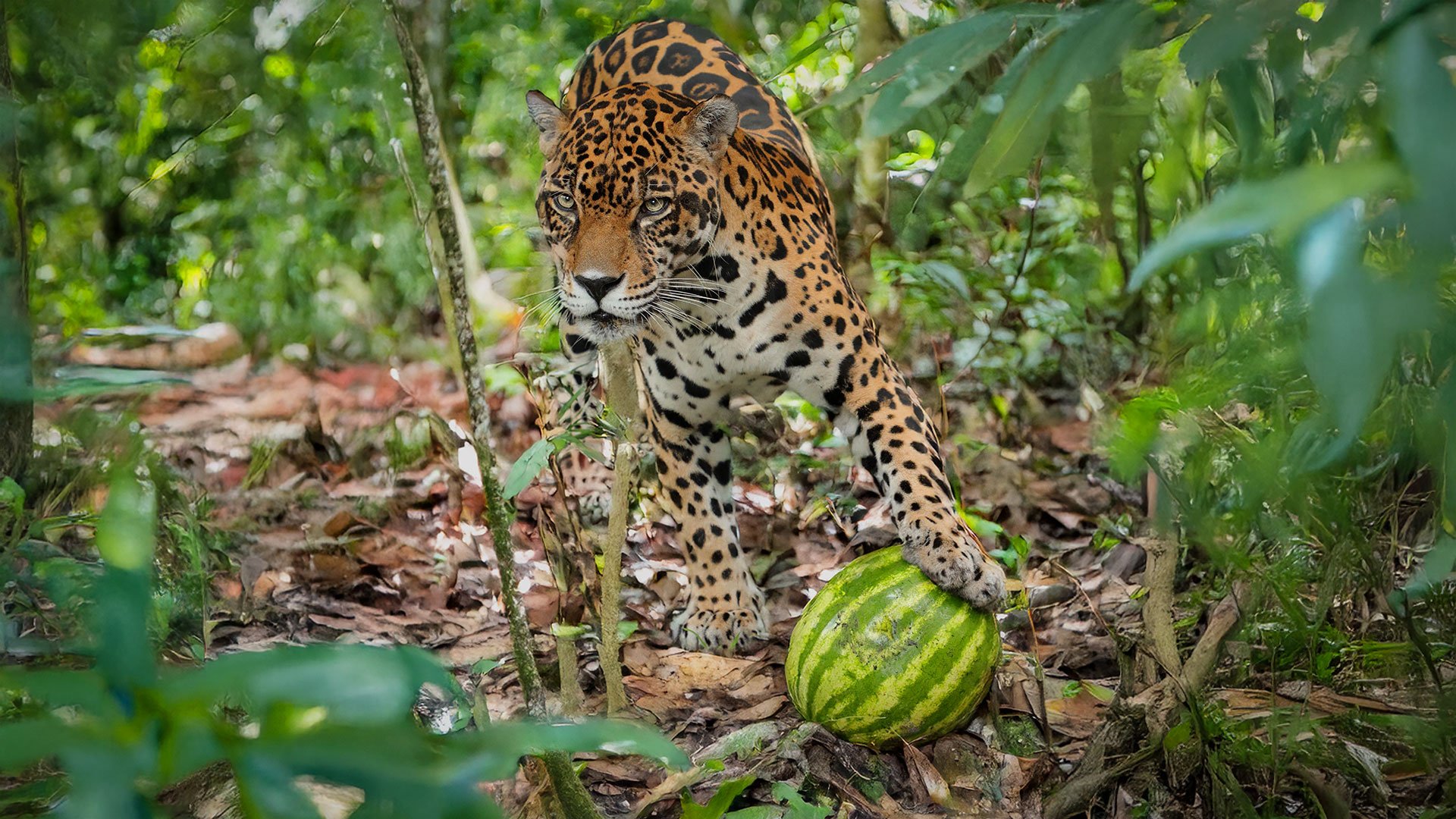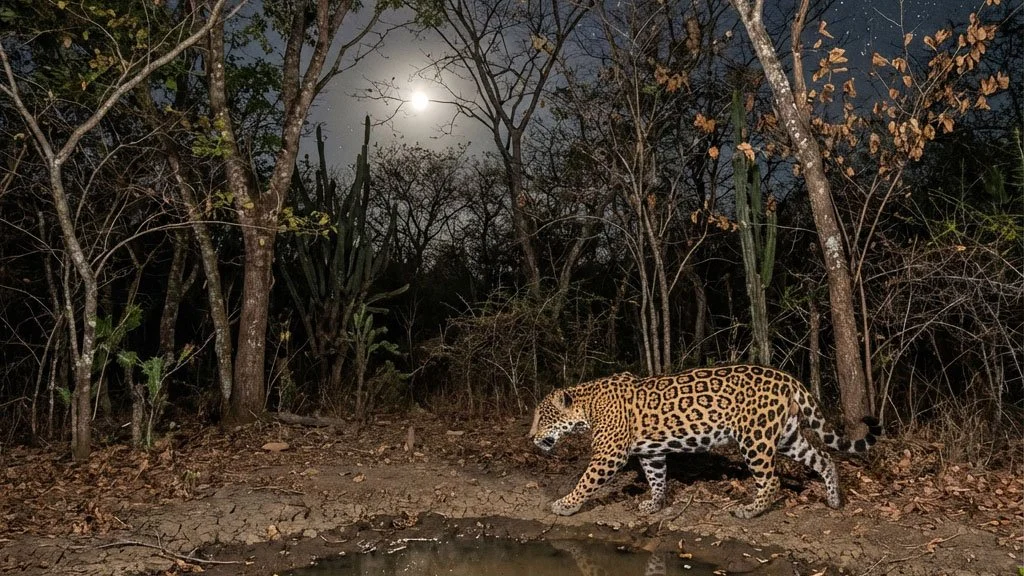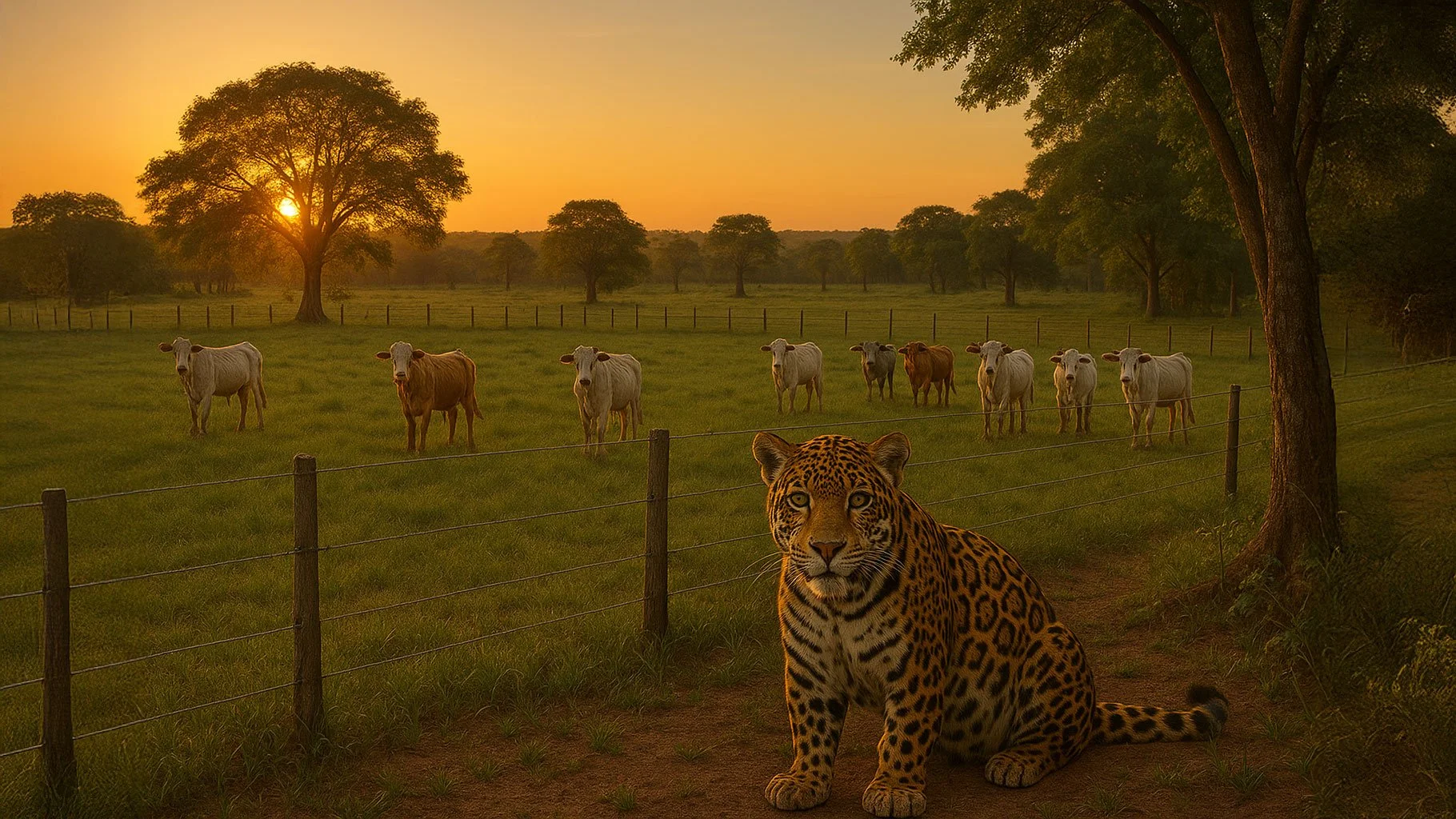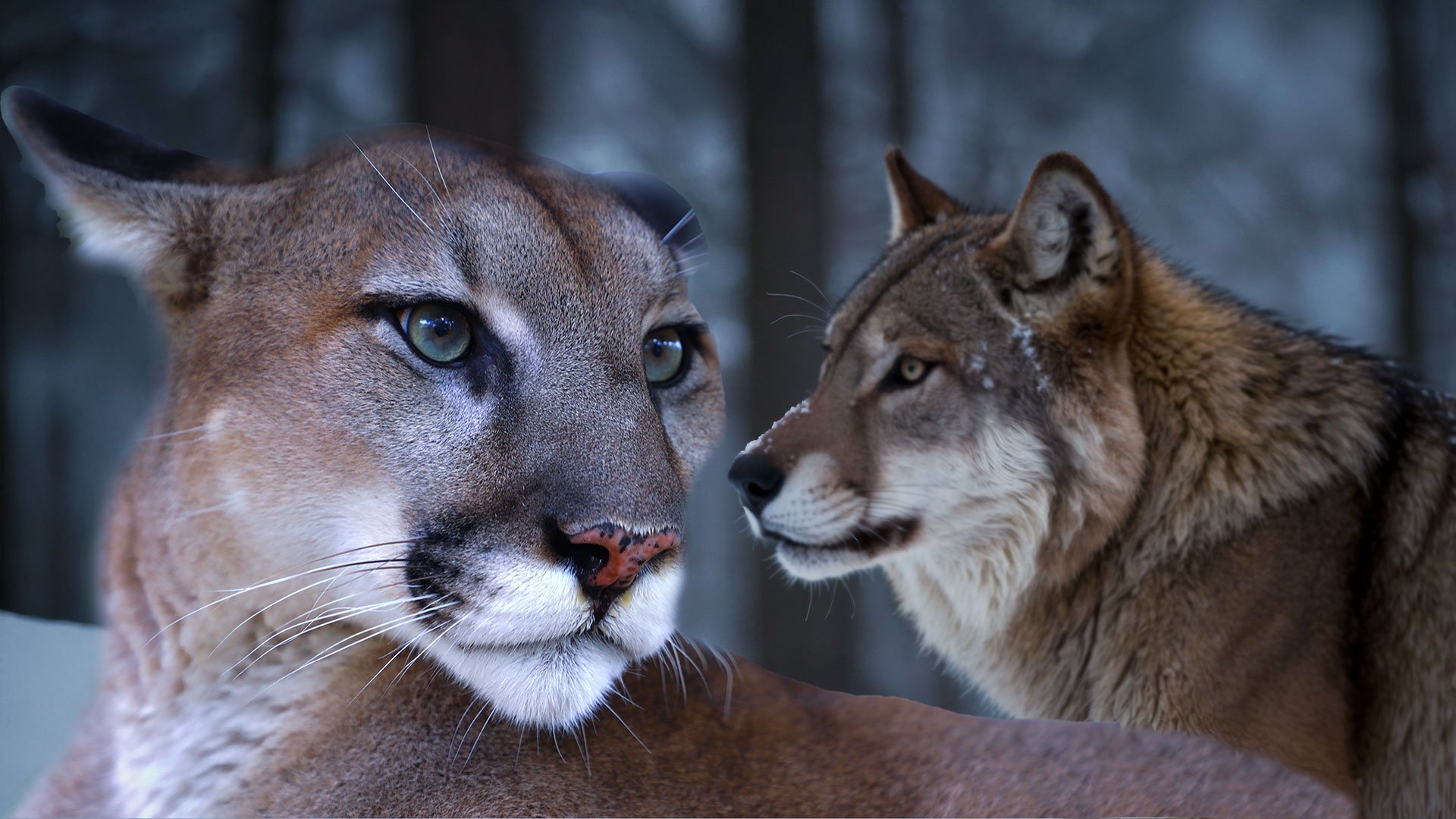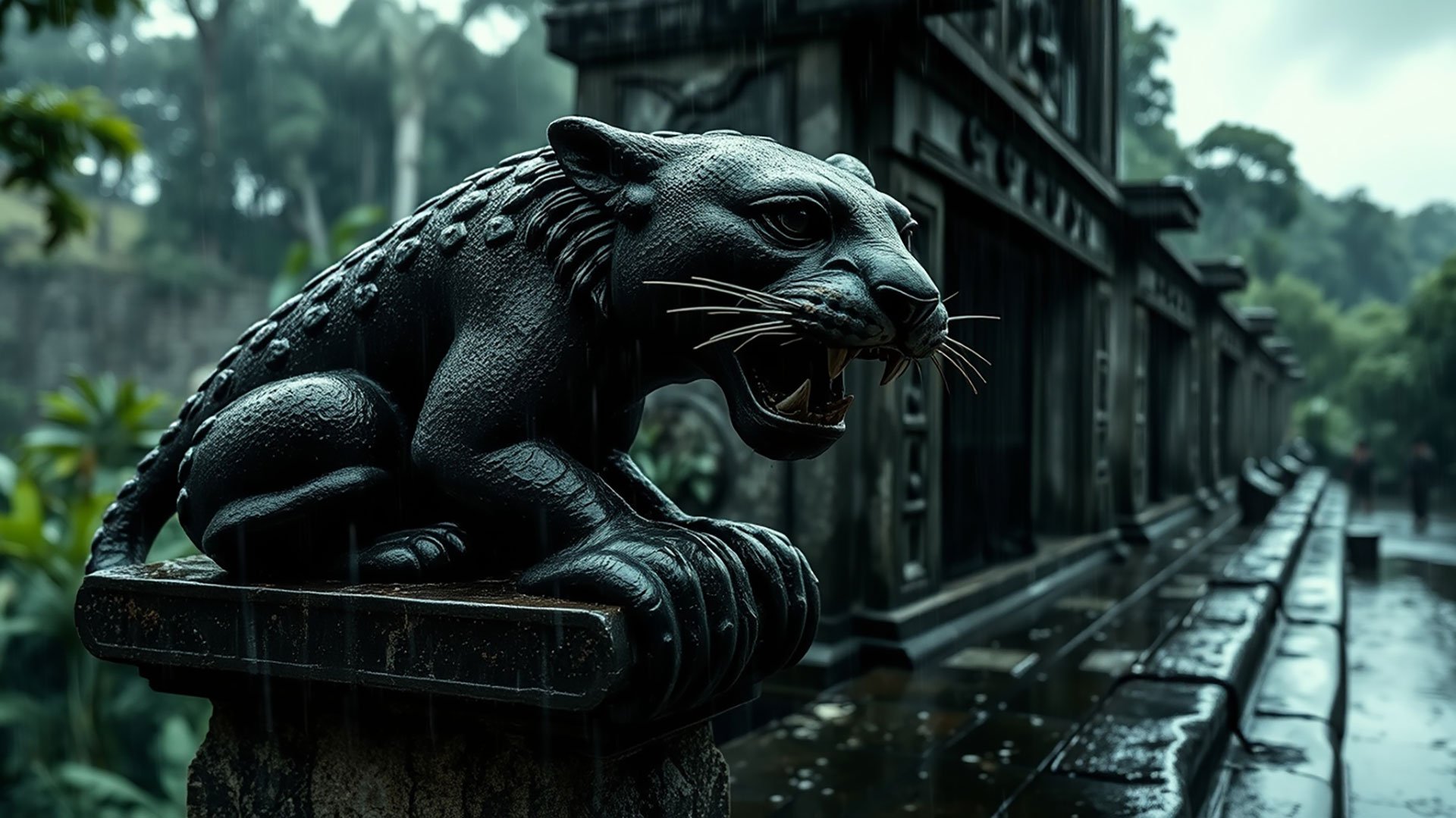Shadows in the Canopy: The Race to Save Suriname’s Jaguars
A low rumble pulses through the dense Surinamese rainforest, reverberating among towering trees. It is the call of a jaguar—a regal cat whose amber eyes and sleek rosette coat have captivated humans for centuries. In this mysterious green world, each breath carries the scent of damp earth and the promise of hidden wonders. This place brims with life, from the rustling canopy above to the dark forest floor below, and at its heart roams the elusive jaguar, a symbol of power and grace.
Yet, this majestic cat finds itself the unwitting target in a troubling surge of global wildlife trafficking. Recent investigations have shone a spotlight on a grim reality: Suriname, a small South American country that shelters lush habitats vital to jaguars, has become an alarming hub for the illicit trade in jaguar parts. As consumer demand increases—some cultures prize jaguar bones, teeth, and fur for alleged medicinal or decorative purposes—criminal networks are stepping up their efforts. The result is a clandestine pipeline that funnels jaguar remains across borders, undermining the region’s biodiversity and threatening a species struggling for survival.
A Battle Fought in Shadows
Imagine a scene in a makeshift camp deep in the jungle. By moonlight, poachers scour the forest. With quiet footsteps and an unwavering goal, they set traps along jaguar pathways—along well-worn trails that these cats use to patrol their territory. The humans are patient. A single jaguar can be worth thousands of dollars in illicit markets. When one is caught, its roar pierces the night in a sound that is at once furious and terrified. Poachers often move quickly to kill the cat, strip it of valuable parts, and prepare them for a black market pipeline that snakes across continents.
It’s not only the jaguars that suffer. Local communities in Suriname, who have historically coexisted with these cats, have begun to feel an economic pinch. Nature-based tourism and a vibrant ecotourism sector could be sources of income for these communities—if the jaguars remain alive and free to captivate visitors. But as poaching intensifies and stories of illegal dealings overshadow the country’s beautiful biodiversity, many worry that the delicate balance of this ecosystem is already beginning to fray.
Hope in the Face of Adversity
Despite these challenges, a new determination is emerging. Global wildlife organizations and local groups alike are striving to protect the jaguar’s territory and intercept these trafficking rings. The U.S. Department of Homeland Security has been investigating the international networks behind jaguar smuggling, revealing just how deep the ties run. The threat, however, cannot be eradicated through enforcement alone; it requires education, collaboration, and a collective effort from all who care.
From Suriname’s capital of Paramaribo to far-flung rural outposts, volunteers and rangers patrol jungles, gathering intelligence and tracking suspicious activity. Indigenous communities share ancestral knowledge about the land and the habits of big cats, helping to anticipate poachers’ moves. Conservationists are working with local governments to strengthen legislation, impose stiffer penalties, and bolster the surveillance of ports and shipping routes where illegal wildlife parts may pass.
Some might ask, “Why go to all this trouble for a single species?” But that single species—Panthera onca, the jaguar—is a keystone in the rainforest. It curbs population imbalances by preying on weaker or sicker animals, preventing disease from spreading, and ensuring that grazers don’t overrun the lush vegetation. The health of the jaguar population directly correlates with the health of the entire ecosystem. Lose the jaguar, and you risk unraveling the intricate tapestry of the Surinamese rainforest itself.
The Beating Heart of the Rainforest
For many who live in close connection with the land, the jaguar is more than an animal—it is a cultural totem. Across the Americas, in myth and legend, jaguars are worshipped as protectors and spiritual guides. When these cats vanish, parts of that living cultural heritage vanish with them. Their extinction would leave not only an ecological wound, but a cultural one as well.
Every day, new rays of hope shine through the canopy. Nonprofit organizations and wildlife sanctuaries are raising funds to monitor populations, heal injured cats, and relocate orphaned cubs. Surveillance technology—camera traps and drones—provides more reliable data on where jaguars roam and where they might be at greatest risk.
But the fight is far from over. The darkness of illegal trafficking looms large, driven by consumers unaware (or unconcerned) about the cruelty and ecological damage behind a set of jaguar claws or teeth. Awareness campaigns have begun highlighting the plight of jaguars in Suriname and beyond, urging consumers worldwide to stop purchasing products derived from big cats. If demand drops, the illegal trade will feel the strain.
Why You Should Care
Conservation isn’t just the work of faraway nonprofits. It’s all of us—coming together for a shared cause. Each of us plays a part in keeping the wonder of jaguars alive, whether we live in Suriname, San Francisco, or Seoul. When we speak up, share facts on social media, and invest in ecotourism or ethical organizations, we become part of a global network dedicated to preserving these iconic animals.
Your voice and actions matter. By donating to accredited sanctuaries like Big Cat Rescue, you help fund rescue, rehabilitation, and investigative efforts. By choosing to be a responsible citizen—buying only from sustainable sources, advocating for wildlife protections, and refusing to stay silent—you send a ripple through the world, one that can thwart even the darkest trafficking ring.
A Positive Path Forward
While it’s heartbreaking to recognize the dangers that jaguars face, hope prevails in the resolute people fighting to save them. At Big Cat Rescue and similar organizations, you’ll find individuals working tirelessly to care for injured or orphaned big cats. These sanctuaries also educate the public, ensuring that the fascination with jaguars leads to empathy and respect rather than exploitation.
Now is the time to align your heart with your actions. Imagine, for a moment, the jaguar crossing a moonlit clearing, unafraid, fully alive in its rightful home. That future is possible if we all stand up for these creatures. It’s easy to feel powerless—yet each small step creates a wave of change. Donate, advocate, share the story. Together, we can preserve the roar in Suriname’s moonlit forests.
Learn more at this paywall link: https://www.washingtonpost.com/world/2025/02/23/suriname-jaguar-trafficking-dhs-investigations/?utm_source=flipboard&utm_content=WashPost/magazine/World
